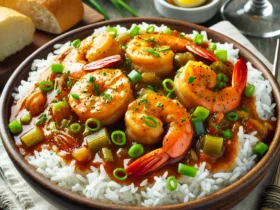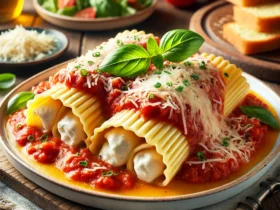Cooking lobster tail at home can seem intimidating, but with the right techniques and a bit of patience, you can create a luxurious, restaurant-quality dish. This guide will walk you through everything you need to know about preparing, cooking, and serving lobster tail, ensuring that you achieve perfect results every time.
Introduction to Lobster Tail
Lobster tail is a prized delicacy known for its tender, sweet, and succulent meat. Unlike the whole lobster, which can be challenging to handle, the tail is easier to cook and yields a generous portion of meat. Whether you are celebrating a special occasion or simply indulging in a gourmet meal, lobster tail is an excellent choice.
Choosing the Right Lobster Tail
Before you start cooking, it’s essential to choose the right lobster tail. Here are some tips:
- Fresh vs. Frozen: Fresh lobster tail is always preferable, but frozen tails can also be delicious if properly handled. Ensure that frozen tails are free from ice crystals and have a pleasant ocean smell.
- Size Matters: The size of the lobster tail will affect cooking time. Smaller tails (4-6 ounces) cook more quickly than larger ones (8-12 ounces). Choose the size based on your preference and the number of servings.
- Quality Check: Look for lobster tails with firm, translucent meat and no discoloration. Avoid tails that have a strong ammonia smell or appear mushy.
Preparing Lobster Tail
Preparation is key to achieving tender and flavorful lobster tail. Follow these steps to prepare your lobster tail:
- Thawing: If using frozen lobster tails, thaw them overnight in the refrigerator. For a quicker method, place them in a sealed plastic bag and submerge them in cold water for 30-60 minutes.
- Cleaning: Rinse the thawed lobster tails under cold water and pat them dry with paper towels.
- Butterflying: To butterfly the lobster tail, use kitchen shears to cut down the center of the shell, stopping just before the tail fin. Carefully spread the shell apart, exposing the meat. Lift the meat above the shell while keeping it attached at the base, resting it on top of the shell for an elegant presentation.
Cooking Methods
There are several ways to cook lobster tail, each offering a unique flavor and texture. Here are some popular methods:
1. Boiling
Boiling is one of the simplest methods to cook lobster tail, ensuring moist and tender meat.
Instructions:
- Fill a large pot with salted water (1 tablespoon of salt per quart of water) and bring it to a boil.
- Add the lobster tails to the boiling water. For smaller tails, boil for 4-6 minutes; for larger tails, boil for 6-9 minutes.
- The tails are done when the meat is opaque and firm. Remove from the water and let them cool slightly before serving.
2. Steaming
Steaming is a gentle cooking method that preserves the lobster’s natural flavors.
Instructions:
- Fill a large pot with 2 inches of water and bring it to a boil.
- Place a steamer basket in the pot and add the lobster tails.
- Cover the pot and steam the tails for 6-8 minutes for smaller tails, and 8-12 minutes for larger tails, until the meat is opaque and firm.
- Remove the tails from the steamer and let them cool slightly before serving.
3. Baking
Baking lobster tail enhances its natural sweetness and gives it a slightly caramelized flavor.
Instructions:
- Preheat your oven to 425°F (220°C).
- Place the prepared lobster tails on a baking sheet.
- Brush the meat with melted butter, garlic, lemon juice, and your favorite seasonings (such as paprika, salt, and pepper).
- Bake the lobster tails for 10-12 minutes, or until the meat is opaque and lightly browned.
- Remove from the oven and let them rest for a few minutes before serving.
4. Broiling
Broiling gives the lobster tail a beautifully charred exterior and tender interior.
Instructions:
- Preheat your broiler to high.
- Place the prepared lobster tails on a broiler pan.
- Brush the meat with melted butter, garlic, lemon juice, and seasonings.
- Broil the lobster tails 5-6 inches from the heat source for 8-10 minutes, or until the meat is opaque and lightly charred.
- Remove from the broiler and let them rest for a few minutes before serving.
Flavoring and Seasoning
Lobster tail is naturally flavorful, but a few additional ingredients can elevate its taste. Here are some ideas:
- Butter and Garlic: A classic combination that enhances the natural sweetness of lobster.
- Lemon and Herbs: Fresh lemon juice and herbs like parsley, thyme, or dill add a refreshing note.
- Spices: Paprika, cayenne pepper, and Old Bay seasoning can give your lobster tail a bit of a kick.
- Sauces: Serve with melted butter, garlic butter, hollandaise sauce, or a light lemon cream sauce.
Serving Suggestions
Lobster tail pairs well with various side dishes, making it a versatile main course. Here are some serving suggestions:
- Vegetables: Steamed asparagus, roasted Brussels sprouts, or sautéed green beans complement the richness of lobster.
- Starches: Serve with garlic mashed potatoes, wild rice, or a light pasta dish.
- Salads: A fresh garden salad or a tangy coleslaw can balance the richness of the lobster tail.
- Bread: Warm, crusty bread or buttery dinner rolls are perfect for soaking up any leftover butter or sauce.
Tips for Perfect Lobster Tail
- Do Not Overcook: Lobster tail can become tough and rubbery if overcooked. Always monitor the cooking time closely.
- Resting Time: Allow the cooked lobster tails to rest for a few minutes before serving. This helps the juices redistribute, ensuring moist and flavorful meat.
- Presentation: For a restaurant-quality presentation, garnish the lobster tail with fresh herbs, lemon wedges, and a drizzle of melted butter.
Conclusion
Cooking lobster tail at home can be a rewarding and delicious experience. By following these steps and tips, you can create a luxurious meal that rivals any fine dining restaurant. Whether you prefer boiling, steaming, baking, or broiling, each method offers a unique way to enjoy this delicacy. Remember to choose high-quality lobster tails, season them well, and pair them with complementary sides for a truly memorable dining experience.
Enjoy your culinary adventure and savor the exquisite taste of perfectly cooked lobster tail!
FAQs
Q: How do I know when lobster tail is done cooking? A: The lobster meat should be opaque, firm, and white. The internal temperature should reach 140-145°F (60-63°C).
Q: Can I cook lobster tail on the grill? A: Yes, grilling is another delicious method. Brush the tails with butter and grill over medium heat for 5-6 minutes per side.
Q: How do I store leftover cooked lobster tail? A: Store leftovers in an airtight container in the refrigerator for up to 2 days. Reheat gently to avoid overcooking.
Q: Can I cook lobster tail from frozen? A: It’s best to thaw lobster tail before cooking for even results. However, you can cook it from frozen by adding extra cooking time.
Q: What is the best way to thaw frozen lobster tail? A: Thaw lobster tail overnight in the refrigerator or place it in a sealed plastic bag and submerge it in cold water for 30-60 minutes.







Leave a Reply